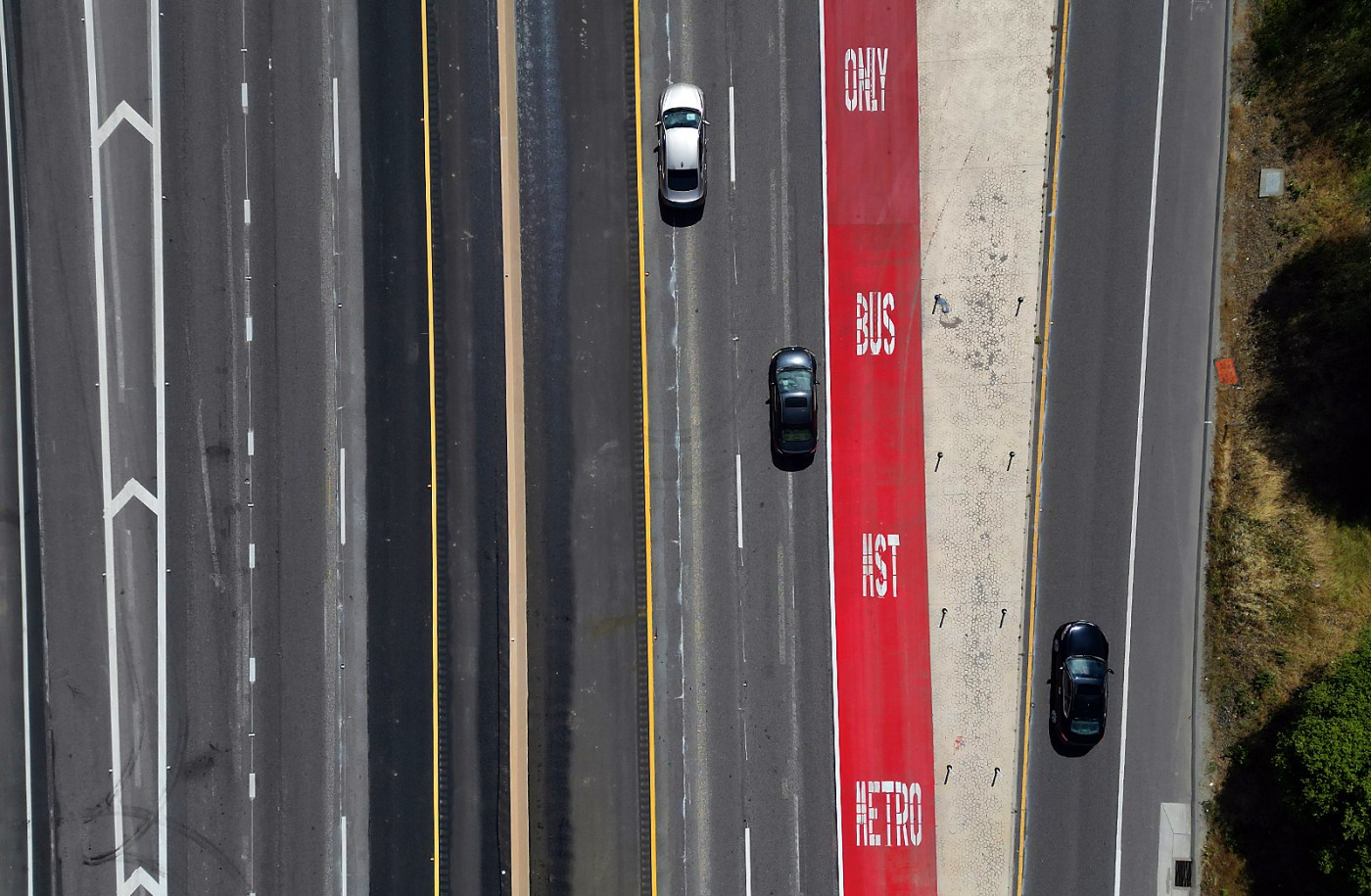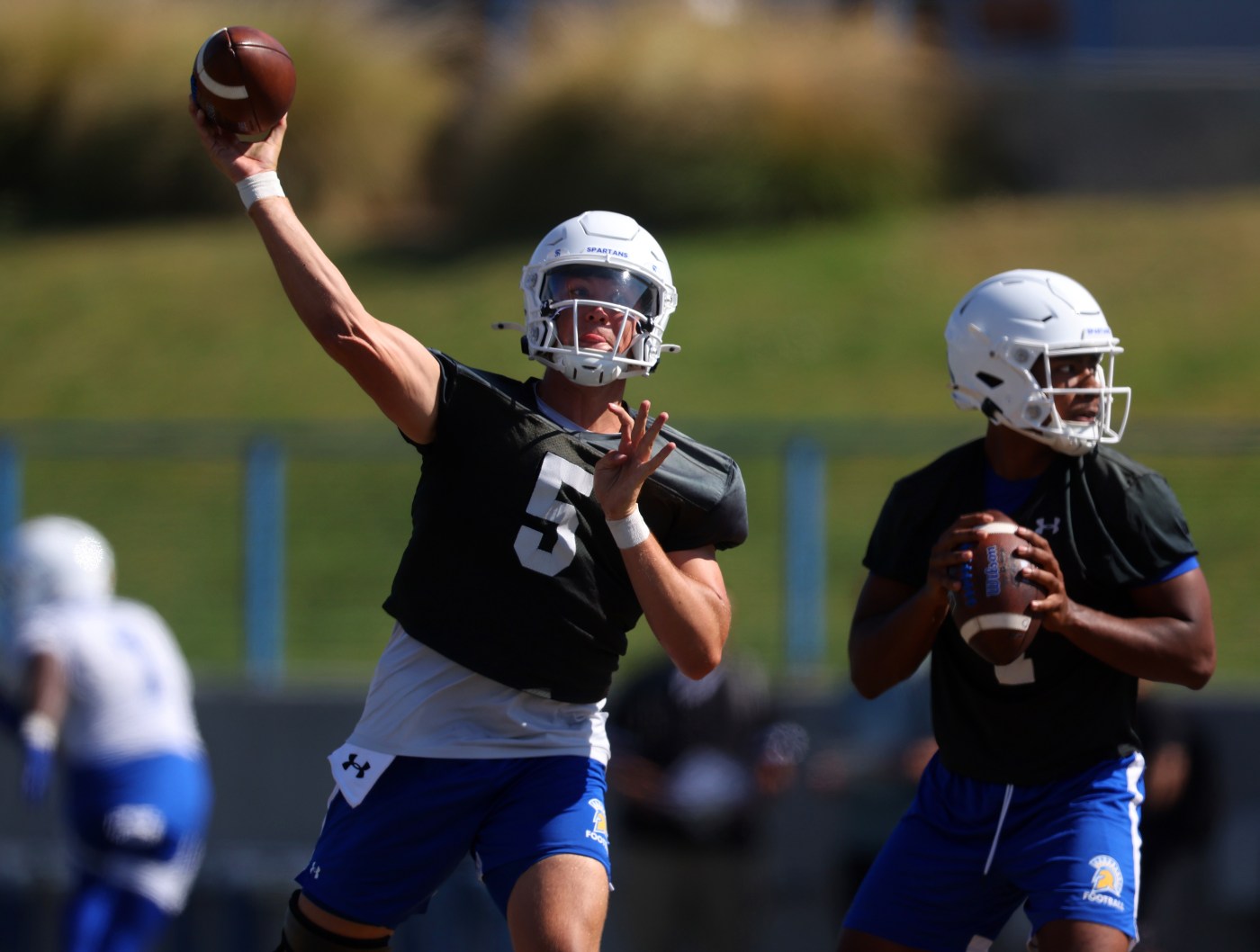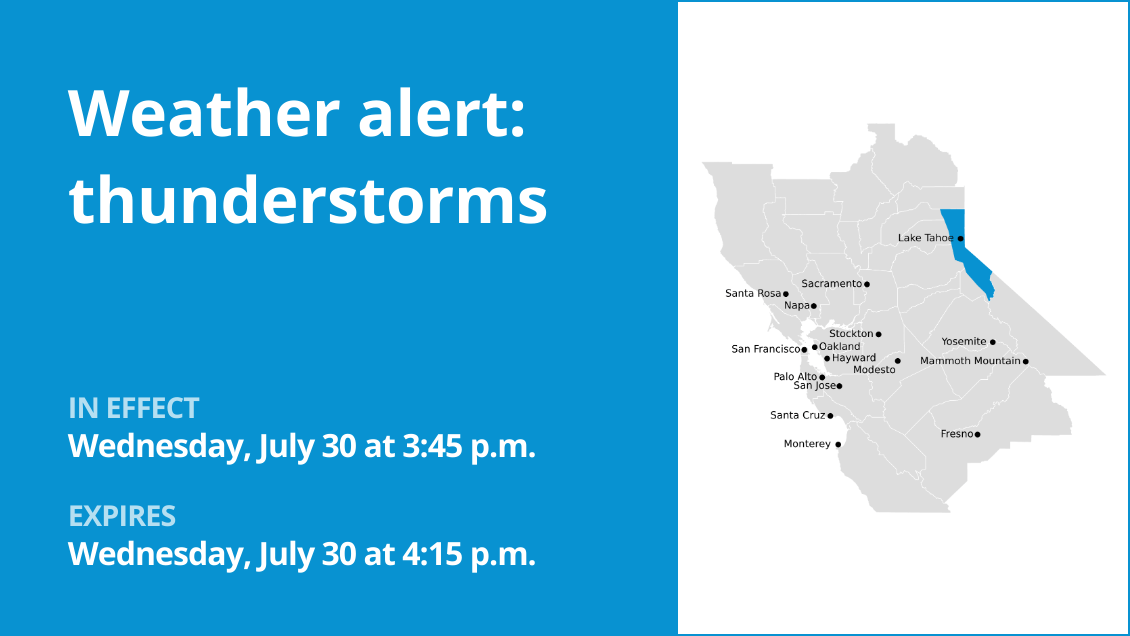SANTA CRUZ — When giant red rectangles first began appearing in truncated sections along Highway 1, their purpose was likely somewhat mysterious to the average passerby. Then, in recent weeks, a glimpse of clarity emerged in the form of large white letters that were painted onto the rouge pavement to spell out “Metro MST Bus Only.”
But local transportation officials say the system these words delineate is unique to highways in Santa Cruz County — and the entire state for that matter — so it’s understandable that some may still wonder how it’s all supposed to work in practice. Luckily, that system isn’t set to roll out until late next year, giving the agencies responsible plenty of time to explain the rules of the road.
Defining features
The red pavement signifies bus-on-shoulder lanes that will be made available to Santa Cruz Metro in hopes that it will help drivers — and the passengers they carry — maneuver more efficiently along crowded highway routes. But these brief, bus-exclusive sections along the highway’s shoulder have a key partner: auxiliary lanes.
Auxiliary lanes are the lengthier, continuous travel lanes that extend between highway on- and off-ramps. Though they lack the colorful flair of the bus-on-shoulder markings, they have likely attracted even more notice in the region after new, roughly 1.5-mile sections were recently established in both directions of the highway from Soquel Drive to 41st Avenue.
Though these exit-bound routes are known to clog up during peak commuting hours, local transportation officials reason that they will help Metro buses move more quickly along the county’s busiest transportation corridor, in turn incentivizing transit travel.
Related Articles
Caltrans work on closed section of Highway 1 near Big Sur includes installing dowels
Highway 1 overnight closures near Capitola start Sunday
Pedestrian killed in Highway 1 hit and run
Caltrans using remote-controlled equipment to help clear Highway 1 slide near Big Sur
And while all auxiliary lanes must come to an end, that’s where the red markings come in. Shannon Munz, a spokesperson for the Santa Cruz County Regional Transportation Commission, explained that the bus-on-shoulder sections will help Metro buses shoot the gap.
Just before taking the highway off-ramp, the bus will veer to its left, slip onto the shoulder of the highway and travel all alone until it reaches the beginning of the highway’s next auxiliary lane on the right, where it can continue to move forward at a quickened pace.
“Hopefully the buses will have a better transit time and get to places quicker without having to be stuck in some of the same traffic the cars are in on the highway,” said Munz.
First of its kind
Munz added that while bus-exclusive lanes are a common sight in city areas — including downtown Santa Cruz — this is the first bus-on-shoulder system implemented on a highway anywhere in California.
In 2013, state lawmakers passed Assembly Bill 946, authored by former county Supervisor and then-Assemblymember Mark Stone. The bill allowed Monterey-Salinas Transit, or MST, and Santa Cruz Metro to conduct a transit bus-only program using the shoulders of certain state highways, pending approval by Caltrans and the Department of the California Highway Patrol.
This led to a feasibility study, completed in 2018, showing that the bus-on-shoulder and auxiliary lane combination showed promise in Santa Cruz County, according to the commission. At the time of the study, Monterey-Salinas Transit had a route that ran into Santa Cruz and though that line is currently out of service, the transportation commission decided to stamp “MST” into its pavement in case it ever starts up again.
John Urgo, Metro’s director of planning and development, told the Sentinel in a written statement that more than 20% of transit riders across the county use Metro routes 1, 2 and 90X — all of which are greatly impacted by highway traffic congestion — every weekday as they commute to work or other key community facilities.
“These riders experience up to 30 minutes of delay each trip because of traffic congestion and signals. As a result, bus travel times are approximately twice as long as vehicle travel times,” he wrote. “The bus on shoulder project is expected to reduce travel times by as much as 10% on the highway portion of these routes, primarily Route 90X, and will create a more reliable and consistent transit experience less impacted by traffic congestion.”
But Urgo was also quick to admit that the new system alone isn’t enough to adequately improve current traffic conditions.
He said Metro is working alongside the transportation commission, the county and the cities of Santa Cruz and Watsonville to implement a range of projects focused on transit speed and reliability, including signal priority for transit buses, improved bus shelters and boarding areas, as well as safer pedestrian crossings.
“If implemented, these projects could reduce travel times by up to 40%, improve safety, and improve equity of outcomes for transit riders, the majority of whom are students, seniors, or low-income individuals who rely on the service to meet their needs,” Urgo wrote.
Munz clarified that the bus-on-shoulder system won’t come online until late 2026. That’s when a subsequent section of the red paint and highway widening work is due for completion, in turn creating a long enough distance to warrant an official system launch.
Down the road
The traffic-cutting combination is a cornerstone of the transportation commission’s Watsonville-Santa Cruz Multimodal Corridor Program that is split into three phases, the first of which broke ground in 2023 and stretches from Soquel to 41st avenues.
Among the many goals of the project is to establish 7.5 miles of this auxiliary lane and bus-on-shoulder marriage from Soquel Avenue to Freedom Boulevard. But that isn’t all.
Another feature that cannot be missed in this first phase of the project is a bicycle and pedestrian bridge at Chanticleer Avenue that arches across all lanes of the highway in both directions. And while the bridge, adorned with whale silhouettes, may appear finished, Munz said crews are still applying the final touches.
“Although work may seem to have stopped on the project, there has been work overnight for many nights to facilitate the timely completion of the project,” said Munz. “In addition, the work to tie in the asphalt concrete pavement around the Chanticleer bridge landing at Soquel Avenue and Chanticleer Avenue had to be re-verified based on actual elevations encountered during construction for road cross slopes and drainage.”
Munz added that the bridge is likely to open within the next few weeks and a ribbon cutting ceremony for completion of the broader Phase 1 effort has been set for July 30.
Phase 2, which broke ground in April 2024, stretches from Bay Avenue/Porter Street to State Park Drive and isn’t expected to be finished until late 2026, according to Munz. Like its sister project in the north, Phase 2 seeks to establish the auxiliary lane and bus-on-shoulder combination in both directions of the highway while also making improvements to other transportation infrastructure in complimentary fashion.
The estimated $94.2 million project includes demolition and reconstruction of the Capitola Avenue bridge as well as establishment of a new bicycle and pedestrian bridge at Mar Vista Drive. While reconstruction of the Capitola bridge was originally expected to be completed this summer, Caltrans told the Sentinel Tuesday that its expected reopening had been pushed back to November. The delay is primarily because crews had to wait for the highway widening work to finish before they could continue with framing and now-planned concrete pours.
Around the same time Phase 2 work is set to finish next year, the highway initiative’s final and most expensive phase is slated to begin construction. This third section will stretch from State Park Drive to Freedom Boulevard and also includes development of Segment 12 of the Coastal Rail Trail project that runs through the Aptos area.





